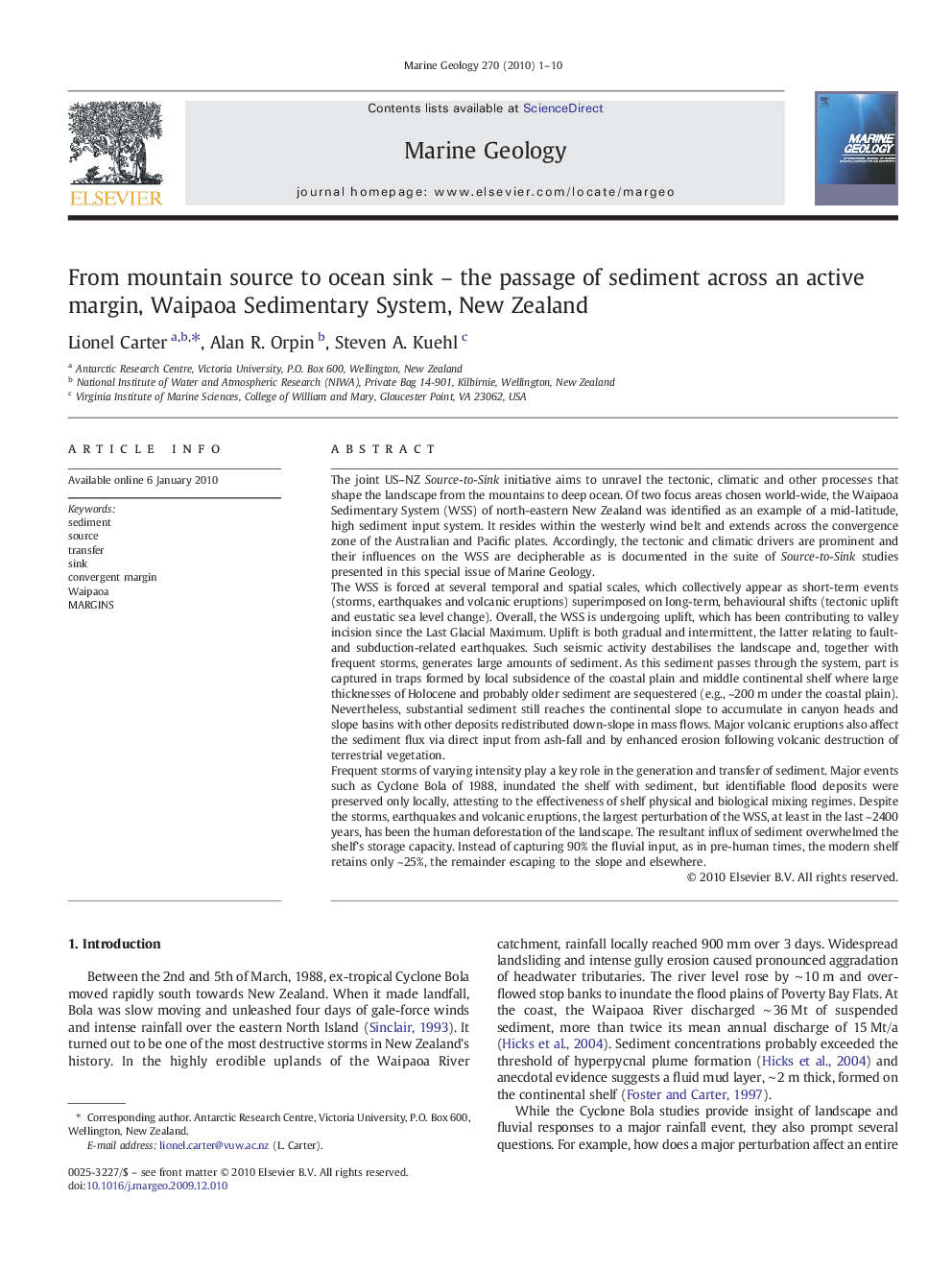| کد مقاله | کد نشریه | سال انتشار | مقاله انگلیسی | نسخه تمام متن |
|---|---|---|---|---|
| 4718772 | 1639152 | 2010 | 10 صفحه PDF | دانلود رایگان |

The joint US–NZ Source-to-Sink initiative aims to unravel the tectonic, climatic and other processes that shape the landscape from the mountains to deep ocean. Of two focus areas chosen world-wide, the Waipaoa Sedimentary System (WSS) of north-eastern New Zealand was identified as an example of a mid-latitude, high sediment input system. It resides within the westerly wind belt and extends across the convergence zone of the Australian and Pacific plates. Accordingly, the tectonic and climatic drivers are prominent and their influences on the WSS are decipherable as is documented in the suite of Source-to-Sink studies presented in this special issue of Marine Geology.The WSS is forced at several temporal and spatial scales, which collectively appear as short-term events (storms, earthquakes and volcanic eruptions) superimposed on long-term, behavioural shifts (tectonic uplift and eustatic sea level change). Overall, the WSS is undergoing uplift, which has been contributing to valley incision since the Last Glacial Maximum. Uplift is both gradual and intermittent, the latter relating to fault- and subduction-related earthquakes. Such seismic activity destabilises the landscape and, together with frequent storms, generates large amounts of sediment. As this sediment passes through the system, part is captured in traps formed by local subsidence of the coastal plain and middle continental shelf where large thicknesses of Holocene and probably older sediment are sequestered (e.g., ~200 m under the coastal plain). Nevertheless, substantial sediment still reaches the continental slope to accumulate in canyon heads and slope basins with other deposits redistributed down-slope in mass flows. Major volcanic eruptions also affect the sediment flux via direct input from ash-fall and by enhanced erosion following volcanic destruction of terrestrial vegetation.Frequent storms of varying intensity play a key role in the generation and transfer of sediment. Major events such as Cyclone Bola of 1988, inundated the shelf with sediment, but identifiable flood deposits were preserved only locally, attesting to the effectiveness of shelf physical and biological mixing regimes. Despite the storms, earthquakes and volcanic eruptions, the largest perturbation of the WSS, at least in the last ~2400 years, has been the human deforestation of the landscape. The resultant influx of sediment overwhelmed the shelf’s storage capacity. Instead of capturing 90% the fluvial input, as in pre-human times, the modern shelf retains only ~25%, the remainder escaping to the slope and elsewhere.
Journal: Marine Geology - Volume 270, Issues 1–4, 15 April 2010, Pages 1–10